Experiencing French Polynesia Aboard Oceania’s Nautica
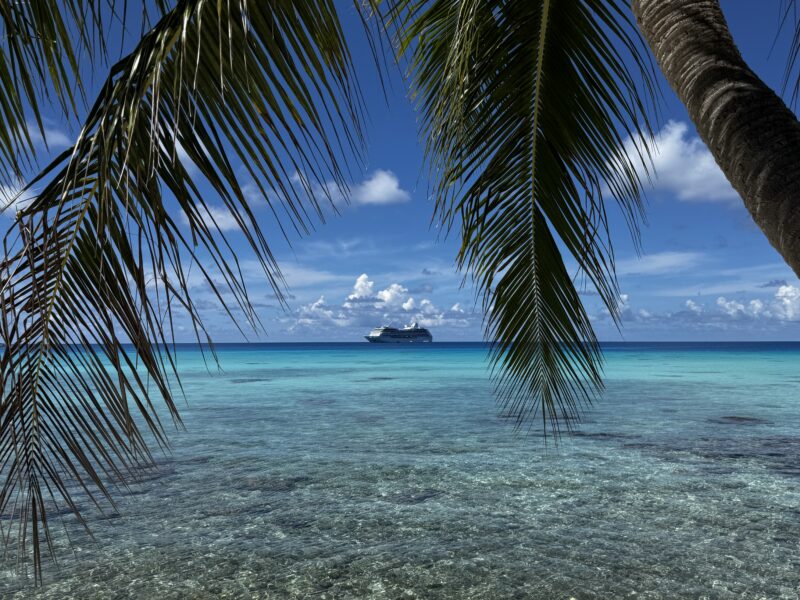
French Polynesia has long captured the hearts and minds of travelers seeking the natural beauty of the South Pacific and the generous spirit of the Polynesians. For those wishing to experience a grand tour of this region while unpacking only once and dining well, a great option is to cruise aboard Oceania Cruise’s Nautica.
One hundred eighteen islands and atolls comprise French Polynesia with five distinct archipelagoes: the Society, Tuamotu, Marquesas, Austral, and Gambier islands. Going off the beaten path a bit offers up profound beauty that’s wedded to the indelible Polynesian spirit. Coupled with resplendent snorkeling, scuba diving, and cultural experiences makes travel here unforgettable.
In “The Autocrat of the Breakfast Table,” Oliver Wendell Holmes, Sr. wrote, “To reach the port of heaven, we must set sail sometimes with the wind, and sometimes against it – but we must sail, and not drift, nor lie at anchor.” This certainly resonated during my recent journey through French Polynesia on Oceania’s Nautica, a mid-sized ship with lovely public spaces, four open-seating restaurants, state-of the art fitness center, Aquamar Spa, eight lounges and bars, casino, boutiques, card and computer rooms, a delightful library, and 342 well-appointed staterooms.
Built in 2000 and beautifully refreshed in 2022, Oceania’s Nautica is 593-feet long. With a maximum of 684 guests, there are enough guests to keep it interesting while maintaining a sense of intimacy. The 400-crew, hailing from 52 countries, provide international flair and excellent service with a crew-to-guest ratio of 1.71 to 1.
Commencing in Papeete
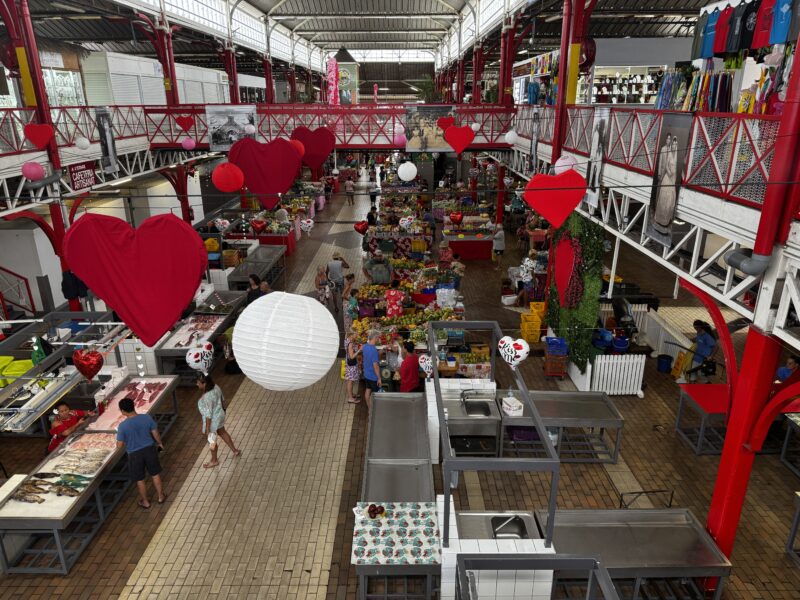
Flights from the west coast arrive early morning allowing for exploration of French Polynesia’s capital, Papeete. Downtown is easily walkable to the port, and there is plenty to see and spend a day or two pre- or post-cruise.
The Papeete Market is a colorful and perennial favorite for aromatic coconut oils, local crafts, pearls, and Polynesian food. As French colonial architecture floats my boat, we popped into the 19th-century Cathédrale Notre-Dame. Since jewelry in general and pearls in particular provide sustenance without calories, The Robert Wan Pearl Museum provides a good introduction to pearl farming and cultivation. Prior to embarkation, we also strolled through Pa’ofa’i Gardens, chock full of vegetation, koi ponds, and views of Mo’orea.
Marvelous Mo’orea
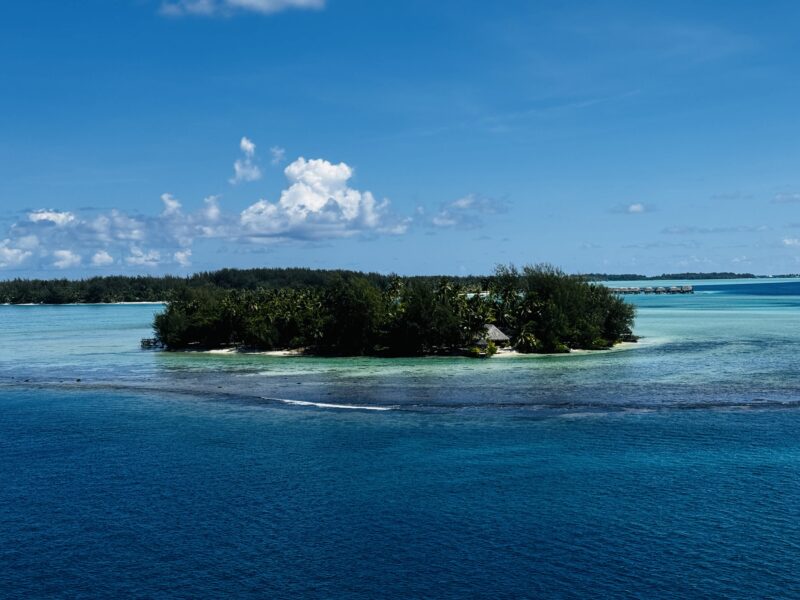
Part of the Society Island archipelago, Mo’orea boasts jagged volcanic mountain vistas and just under 18,000 residents. It was here that we took a marvelous excursion: the motu picnic escapade. Boating for 30-minutes through Windex-colored waters we arrived at Tiahura for nearly an hour of snorkeling amid a veritable stingray ballet, several rays with six-foot wingspans, and a plethora of tropical fish. Plenty of three-to-six-foot black tip sharks meandered about. Happily, they were thoroughly disinterested in making my limbs a part of their diet.
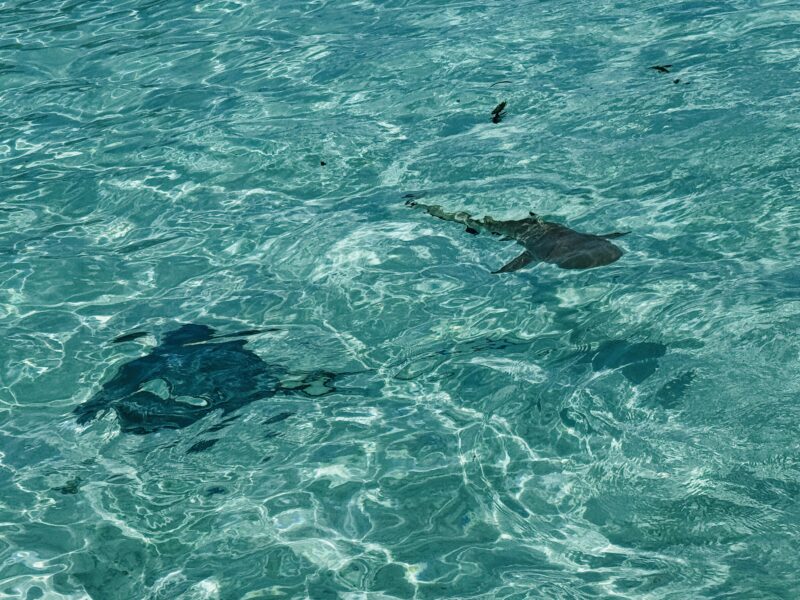
Along the route to our destination, Fare One islet, we paused to watch abundant sea turtles gliding along in slow motion in what can best be described as a watery highway to happiness. At Fare One, we had a Polynesian lunch, swam and relaxed on this Robinson Crusoe-like location as our comedic and delightful guide Ari’i regaled us with spirited stories full of heart and humor.
Fabulous Fakarava
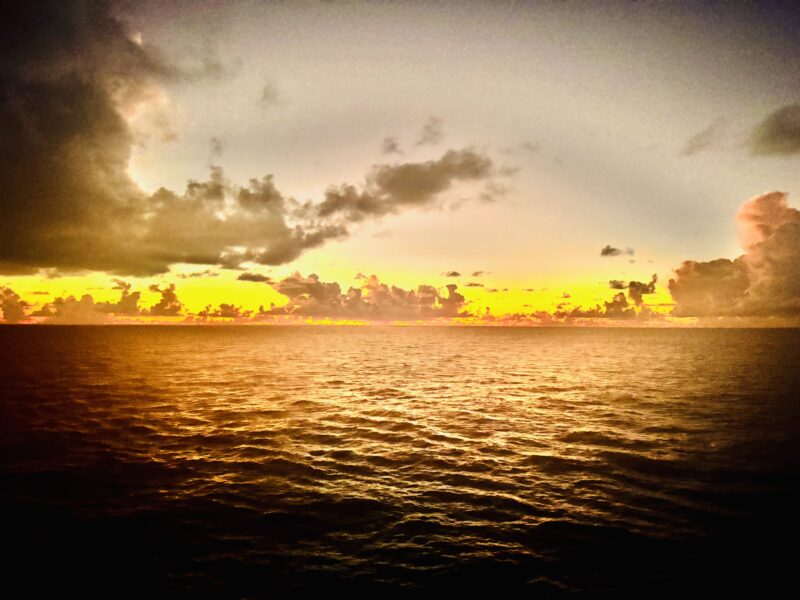
Our next stop was at Fakarava atoll, a UNESCO biosphere protected reserve in the Tuamotu chain. While the second largest, Fakarava is only 37-miles long and 12-miles wide.
Fakarava is a haven for snorkelers and scuba enthusiasts with its pristine coral reef and teeming underwater life and fauna. It’s also the perfect place to sit in crystalline waters, watch colorful fish swim about and channel one’s inner Gilligan.
Magical Marquesas
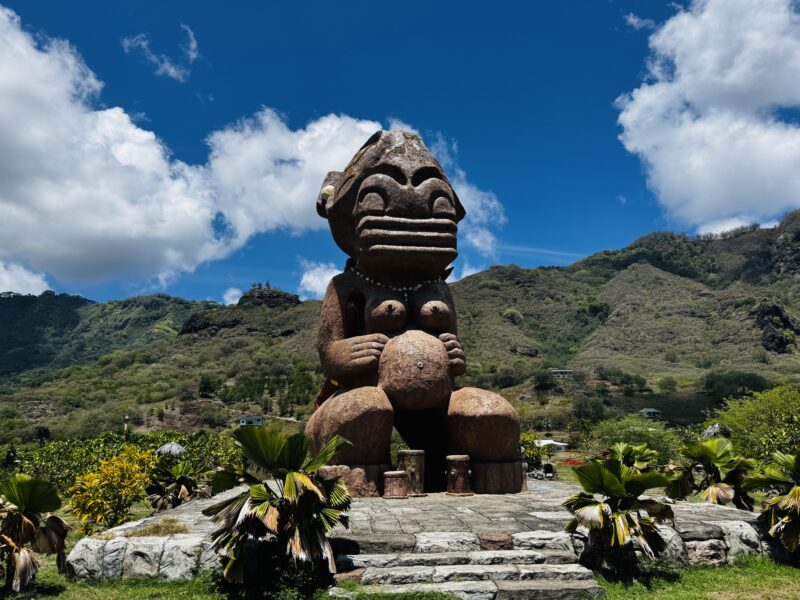
Seeking a deeper dive into the beauty, history, and mystery of French Polynesia’s most isolated archipelago – one I’d fallen hard for on an earlier visit – I was thrilled Oceania’s Nautica was stopping in the Marquesas. Any time here leaves an enduring mark on those fortunate enough to experience Henua Enana – The land of men.
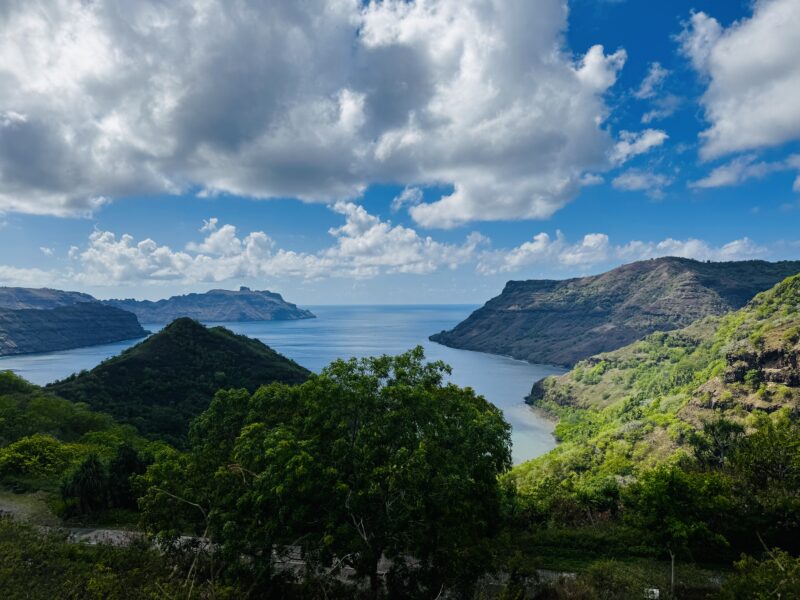
Nearly 1,000 miles northeast of Tahiti, the Marquesas were settled about 800 to 1,000 years ago and are comprised of 12 volcanic islands with only six inhabited by under 10,000 people. Spanish explorer Alvaro de Mendaña gave the islands its name after his benefactor, the Marquis of Cañete. In 1879 France reasserted control over the islands and the Marquesas later became part of French Polynesia.
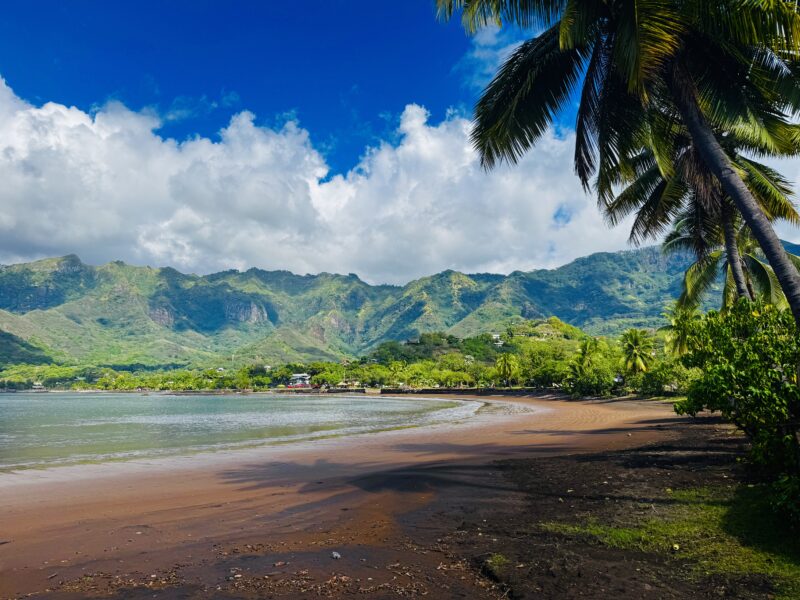
Here we took an excursion to the Tapivai Valley in the eastern part of Nuku Hiva, the Marquesan capital. In 1842 Herman Melville penned Typee based on his Tapivai experiences, while Robert Louis Stevenson’s first landfall on his 1888 Casco voyage was at Hatihe’u in the north. The Marquesas are majestically rugged, with black, brown, and white sand beaches since it’s an infantile 20 million years young, while the rest of French Polynesia is 80 million old.
The Radiance of Rangiroa
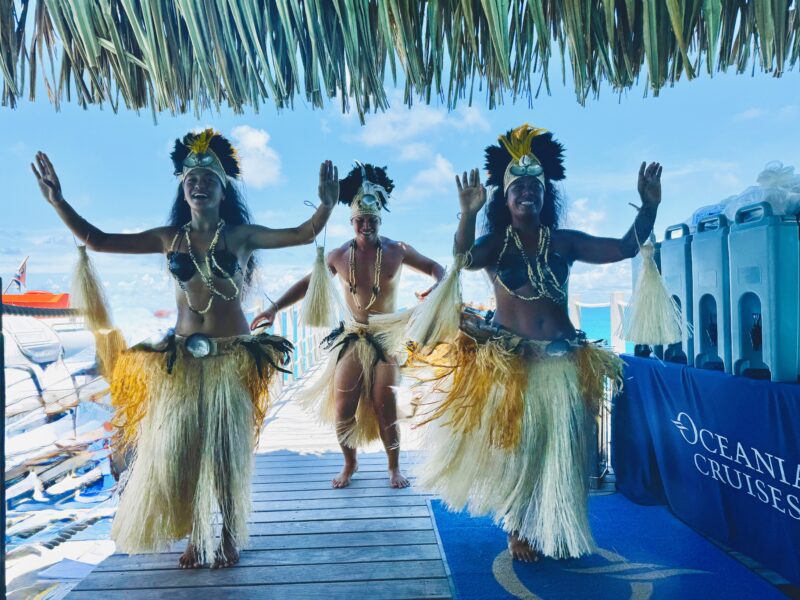
Following a relaxing sea day, we arrived to Rangiroa, a natural aquarium set amid the most pristine azure waters that contains a variety of colorful tropical fish second to none. The largest atoll in French Polynesia and the world’s second largest, it’s 46-miles long and 15-miles wide.
It would be doubtful there’s a more delightful place to snorkel, relax, and contemplate one’s good fortune.
Beautiful Bora Bora
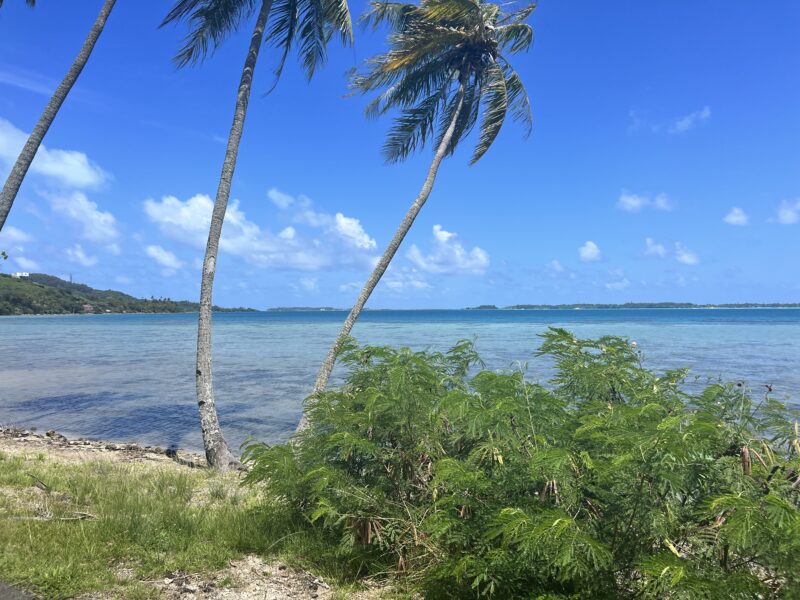
Bora Bora is known for its eye-popping overwater bungalows and dreamy white sand beaches. Here a cultural tour circling the island stopped at several intoxicating viewpoints, a pareo making center, and near Anau, part of a bunker with cannons left by the U.S. during WWII near the island’s highest point, Mt. Otemanu.
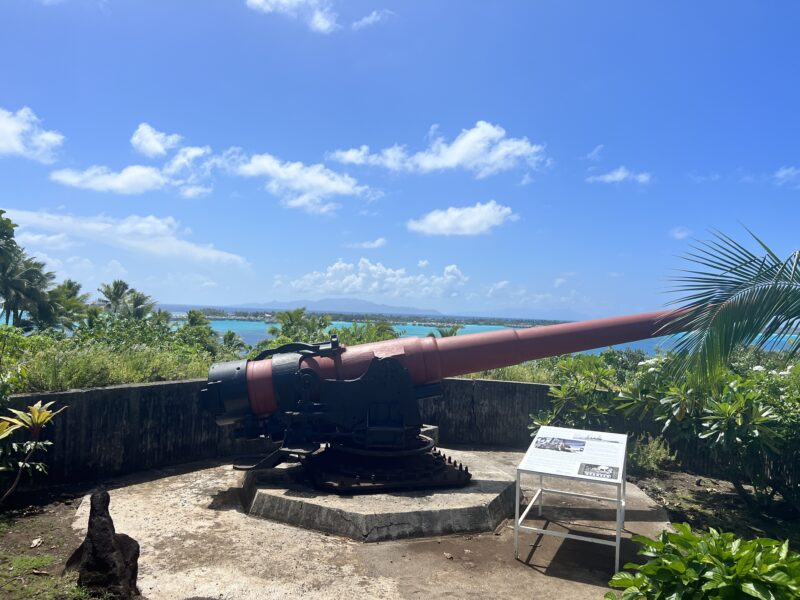
We ended our two days here at the glorious Matira Beach lollygagging in waist deep, balmy blue waters, mesmerized by swaying palms and ending another perfect day with chilled Hinano beers from a local beachfront eatery.
Resplendent Raiatea
The second largest of the Society islands, just 120 miles from Tahiti, is the birthplace of Polynesian culture. One of the most significant marae – sacred places – in all of Polynesia, is here in the center of the Polynesian Triangle, called Taputapuatea. After just a few moments here, the locale’s spiritual importance is ethereally palpable.
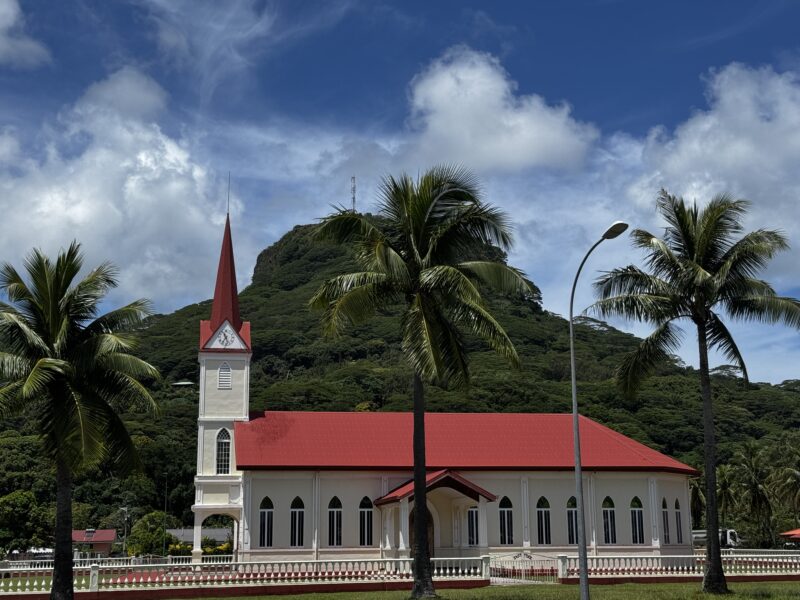
Taking a pleasant stroll in Raiatea’s sleepy capital of Uturoa with its local craft market provided retail therapy before walking to a nearby swimming area complete with a small food truck delivering sustenance while enjoying a slice of local life.
Returning to Tahiti and Onward
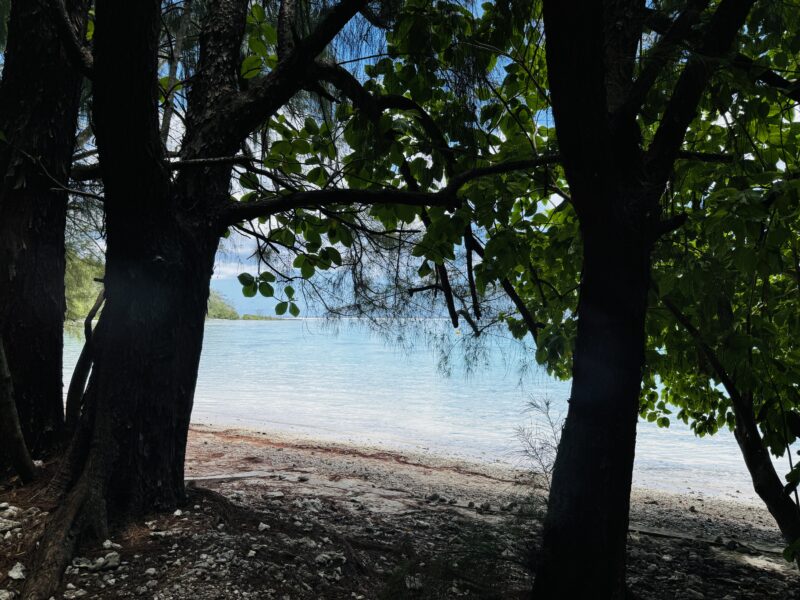
Thinking about the entirety of this experience aboard Oceania’s Nautica, the great dining and its lovely crew, two things became clear. First, the dramatic natural beauty of French Polynesia along with the many smiles and kindnesses of its people, would hold me hostage long after this South Seas sojourn was a distant, sweet memory. Second, I had already become severely re-afflicted with a local virus – a fascination with all things French Polynesian and a burning desire to return. Often.
Julie L. Kessler is a journalist, attorney, and the author of the award-winning memoir: “Fifty-Fifty, The Clarity of Hindsight.” Her work has appeared in several major publications around the world, including The LA Times, The SF Examiner, The Asia Times, The Jerusalem Post, The Vancouver Courier, The Daily Journal and The Honolulu Star-Advertiser, among many, many others. She can be reached at Julie@VagabondLawyer.com





